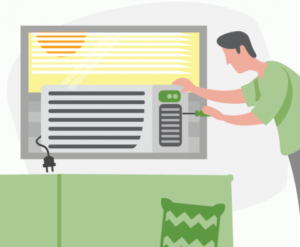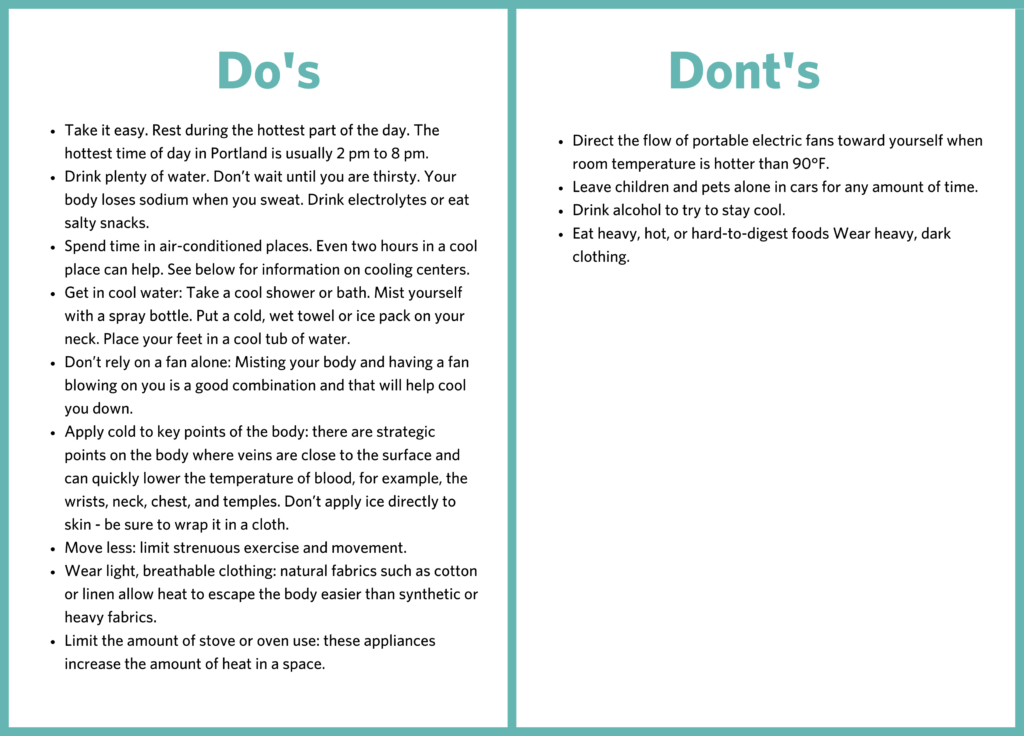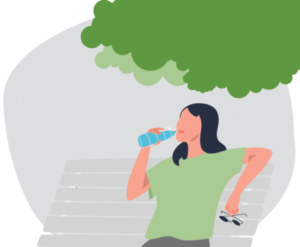Preparing for Extreme Heat
Prepare for Extreme Heat
As the number of days with extremely high temperatures becomes more frequent and dangerous in the Portland area, it is essential that we become more prepared to safely respond. Below we’ve compiled information and resources for the Lloyd community to prepare for heat emergency scenarios.
How to prepare before the next heat wave

1. Get a cooling unit
If your residence already has a cooling unit, such as an air conditioner or heat pump, check that it is running effectively. If you do not have an air conditioning unit, you may qualify for a free one:
- Multnomah County is distributing cooling units to eligible clients. Learn more here.
- Cooling Portland: A PCEF-funded climate resilience program: see if you are eligible to receive a cooling unit.
- Oregon Health Plan: Certain OHP participants may qualify for a free unit.
A note of air conditioners and apartments: In March of 2022, the Oregon Legislature passed Senate Bill 1536 which established tenants’ rights to have a cooling unit in their residence. Additionally, the bill requires landlords to allow most types of air conditioning units. If you are a tenant, it is essential that you know your rights related to cooling units. To learn more, please refer to this article by the Oregonian.
2. Make/acquire indoor shades
Covering windows limits the amount of sun and heat that can enter the room, ultimately increasing the room’s temperature. You can cover windows with various shades such as blankets, aluminum foil, and curtains.
3. Learn how to adapt your home
- Community Energy Project Home Weatherization and Repair: Servicing people who earn 50% of median income or less or are 55 or older and/or have a disability.
- Multnomah County Weatherization Program: Recieve a free energy audit and energy upgrades for free for households earning 200% or less of the Federal Poverty Level.
4. Sign up for public alerts
Signing up for public alerts before an emergency, like a significant heat wave, occurs can give you more time to prepare, as well as important information regarding the emergency. Sign up for alerts for Portland/Multnomah County.
5. Get prepared by attending a workshop
DIY Cooling Workshops: The Community Energy Projects teaches DIY Cooling Workshops on low-cost cooling and energy saving techniques for renters and homeowners – includes free kit of materials for qualified participants.
How to stay safe during a heat wave
Even if you prepare for the heat, it is possible that high temperatures appear suddenly or you might not have access to a cool room at your home. Here are some potential actions to keep yourself (and your pets) cool and safe:
1. Keep yourself cool

2. Find a Cooling Shelter or Location Where You can Cool Down
- Cooling shelters across Portland provide food and water, safe, air-conditioned places to rest or sleep with some shelters allowing pets.
- Check the Multnomah County’s Help for When it’s Hot website up-to-date information.
- Check out this map of up-to-date locations of cooling locations.
- Some Cooling Locations could be outside – such as the interative fountain at Holladay Park in Lloyd or other splash pads around Portland.
- Need a ride to a shelter? Health Share Oregon may be able to help you get there. TriMet also offers free rides to cooling shelters.
- Call 2-1-1 to find a cooling shelter nearest to you or for transportation support to a specific cooling shelter or center. Available in English and Spanish.
- Places like the Lloyd Center, movie theatres, and public libraries are often good places to spend a few hours cooling down.
3. Know the signs of heat-related illnesses
When extreme heat is present, it is important to monitor your own health and the health of those around you. There are three levels of heat emergency: heat cramps, heat exhaustion, and heat stroke. If you know the signs, you can decrease and prevent the possibility of these heat emergencies occurring. In addition to the three main heat emergencies, sunburns and heat rashes are two other common heat-related illnesses.
Take a look at the CDC’s Warning Signs and Symptoms of Heat-Related Illness.
4. Keep your pets cool
- Never leave your pets in a car unattended
- Limit exercise on hot days
- Don’t rely on a fan
- Provide ample shade and water
- Watch signs for heatstroke
- Remember that the street can be a lot hotter than the temperature outdoors and can be very harmful to your pet’s feet. Walk your animal during the cooler parts of the day such as the morning and evening.

Key Links and Resources
- Help for When it’s Hot – Multnomah County
- Extreme Heat Safety – PublicAlerts
- NEW Heat Vulnerability Map – Multnomah County
- Urban Heat Island Map – METRO
- 211 info: Dial 2-1-1 to find cool spaces near you and transportation support.
- Heat Safety Videos in 21 Languages
- National Weather Service: Check the forecast and plan activities for the coolest times of the day.
- Multnomah County: Heat Illness Flyers
Images courtesy of https://www.ready.gov/heat
